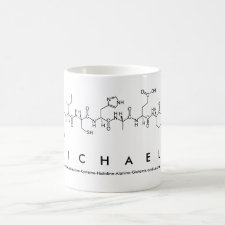
Authors: Piletska EV, Stavroulakis G, Larcombe LD, Whitcombe MJ, Sharma A, Primrose S, Robinson GK, Piletsky SA
Article Title: Passive Control of Quorum Sensing: Prevention of Pseudomonas aeruginosa Biofilm Formation by Imprinted Polymers.
Publication date: 2011
Journal: Biomacromolecules
Volume: 12
Issue: (4)
Page numbers: 1067-1071.
DOI: 10.1021/bm101410q
Abstract: Here we present the first molecular imprinted polymer (MIP) that is able to attenuate the biofilm formation of the opportunistic human pathogen Pseudomonas aeruginosa through specific sequestration of its signal molecule N-(3-oxododecanoyl)-l-homoserine lactone (3-oxo-C12-AHL). The MIP was rationally designed using computational modeling, and its capacity and specificity and that of a corresponding blank polymer toward signal molecule of P. aeruginosa (3-oxo-C12-AHL) and its analogue were tested. The biofilm formation in the presence of polymers and without polymers was studied using scanning confocal laser microscopy. Staining with crystal violet dye was used for the quantification of the biofilm formation. A significant reduction of the biofilm growth was observed in the presence of MIP (>80%), which was superior to that of the resin prepared without template, which showed a reduction of 40% in comparison with biofilm, which was grown without polymer addition. It was shown that 3-oxo-C12-AHL-specific MIP prevented the development of quorum-sensing-controlled phenotypes (in this case, biofilm formation) from being up-regulated. The developed MIP could be considered as a new tool for the elimination of life-threatening infections in a multitude of practical applications; it could, for example, be grafted on the surface of medical devices such as catheters and lenses, be a component of paints, or be used as a wound adsorbent
Template and target information: N-(3-oxododecanoyl)-l-homoserine lactone, 3-oxo-C12-AHL



Join the Society for Molecular Imprinting

New items RSS feed
Sign-up for e-mail updates:
Choose between receiving an occasional newsletter or more frequent e-mail alerts.
Click here to go to the sign-up page.
Is your name elemental or peptidic? Enter your name and find out by clicking either of the buttons below!
Other products you may like:
 MIPdatabase
MIPdatabase









